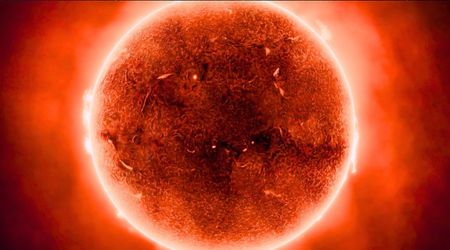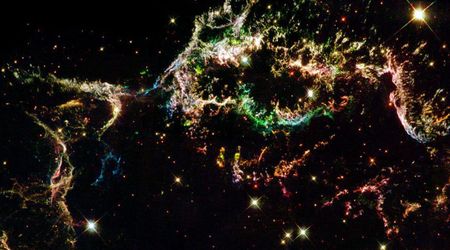Astronomers baffled after discovering our galaxy's closest neighbor is being torn apart

The vast space is yet to be explored fully, and this purpose is driving humankind to put more effort into knowing their neighbors in the cosmos. It has been said that every second, a star in the universe ends its life as a supernova. One such ending might be happening next to our galaxy, Milky Way, as per a study published in The Astrophysical Journal. The Small Magellanic Cloud (SMC) is a dwarf galaxy orbiting beside our galaxy. Astronomers observed a lot of activity from stars in the region, and the galaxy could be meeting its end from the gravitational forces of a nearby larger galaxy, reported the study.

The study was conducted by scientists at Nagoya University in Japan and led by Satoya Nakano and Kengo Tachihara. The motion of massive stars led them to observe that SMC was getting torn apart by the gravitation pull of the Large Magellanic Cloud (LMC). "When we first got this result, we suspected that there might be an error in our method of analysis. However, upon closer examination, the results are indisputable, and we were surprised," Tachihara stated. This neighboring galaxy was around 200,000 light years away.

The team identified and tracked 7,000 massive stars, as usually, spiral galaxies rotated with stars and gas processing around a central axis. The SMC was not rotating the way that astronomers had assumed it would, as per BBC Science Focus. “The question of when rotational motion emerges in galaxies is a topic of great interest among researchers,” Nakano said. “If we’ve misinterpreted even nearby galaxies like the SMC, it suggests we need to be much more cautious when assessing the rotation of galaxies farther afield,” he added about the lack of rotation.

This lack of understanding of the galaxy could immensely impact the knowledge of SMC’s structure as well as the estimates made about its mass. “Estimates for the mass came previously from its presumed rotational motion. But if these are not reliable, then we need to revise our estimates. Without this, we cannot predict what lies in the future for the SMC,” Tachihara noted. The gradual destruction of the neighbor was noted by the movement of stars within the galaxy in opposite directions on either side, caused by the gravitational pull, pulling the galaxy apart.

"Some of these stars are approaching the LMC, while others are moving away from it, suggesting the gravitational influence of the larger galaxy. This unexpected movement supports the hypothesis that the SMC is being disrupted by the LMC, leading to its gradual destruction," Tachihara stated as per Newsweek. The lack of rotation of the stars and, in turn, the interstellar gas was concerning because "This could potentially change our understanding of the history of the three-body interaction between the two Magellanic Clouds and the Milky Way," Nakano said.

This study can also help us learn about how different galaxies interacted in the early universe and how they evolved. This is because the SMC shared similarities with early galaxies in low metallicity and weak gravitational ability. Tachihara stated that the SMC and the LMC are the only galaxies in which we can observe the details of stellar motion. "This research [...] allows us to study the process of star formation in connection with the motion of stars throughout the galaxy." They hoped that further models would help learn more about this dramatic end.









